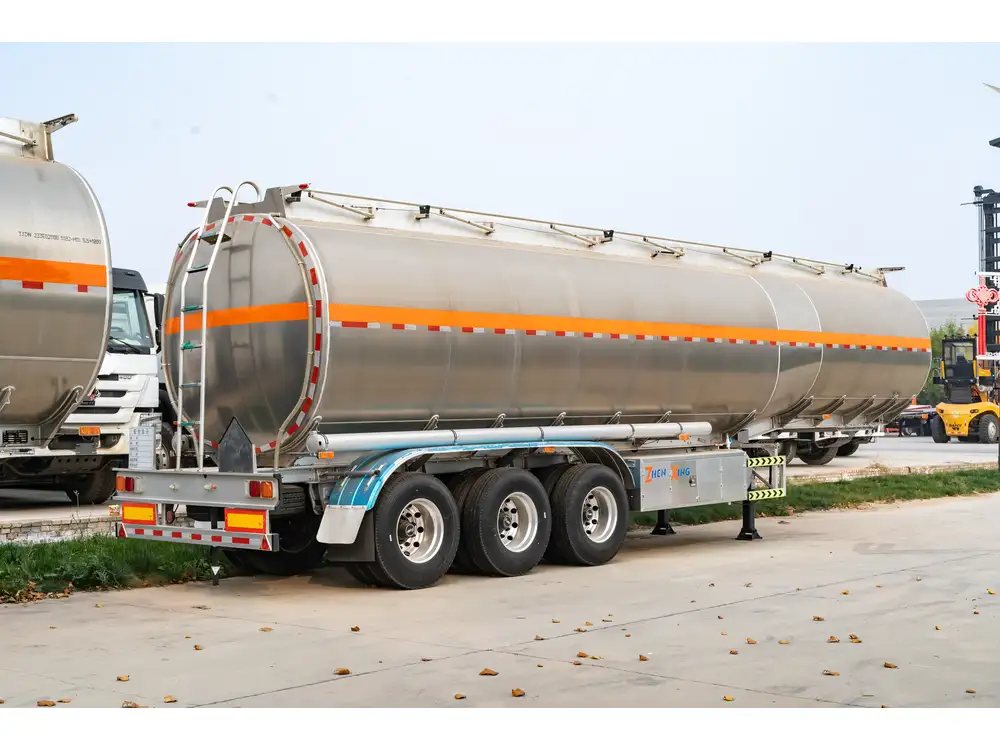When it comes to operating, managing, or purchasing semi-trailers and full trailers, one paramount question often arises: what is the maximum weight of a semi and full trailer? This question isn’t just a piece of trivia; it’s a crucial factor in ensuring compliance with regulations, maintaining safety standards, and optimizing logistics. In this comprehensive guide, we’ll delve into the specifics surrounding maximum weight limits, regulations, and practical implications to aid in making informed decisions.
Overview of Trailer Weight Regulations
Before exploring specific weight limits, it’s vital to understand the governing regulations. In the United States, trailer weight limits are primarily dictated by federal and state laws, alongside the standards set by organizations like the Federal Highway Administration (FHWA).
Federal Regulations
According to the Federal Bridge Law, weight limits for commercial vehicles are structured as follows:
- Maximum Gross Vehicle Weight (GVW): This refers to the combined weight of the vehicle and its load.
- Federal Limits: The maximum GVW for a semi-trailer and full trailer combination is generally restricted to 80,000 pounds (about 36,287 kilograms) on Interstate highways.

Key Weight Classes
Semi-Trailers with Tractors:
- The maximum weight allowable is typically 80,000 pounds.
Full Trailers (non-semi-trailers):
- Standard weight limits also hover around 80,000 pounds, but may vary based on the configuration and number of axles.
State Regulations
State laws can impose additional regulations or different weight limits. Some states adopt special permits for larger vehicles, particularly for oversized loads. It is crucial to consult individual state guidelines to confirm local regulations.
Trailer Configuration and Axle Weight Distribution
The configuration of a trailer significantly influences its weight capacity. Below is a detailing of configurations that affect weight limits:
| Trailer Type | Number of Axles | Max GVW (lbs) | Remarks |
|---|---|---|---|
| Single Axle Semi | 1 | 20,000 | Low capacity, suitable for light loads. |
| Tandem Axle Semi | 2 | 34,000 | Ideal for standard freight transport. |
| Tri-Axle Semi | 3 | 42,000 | Suitable for heavier loads. |
| Full Trailers | Varies | 80,000 | Dependent on axle configurations. |
Note: It is important to balance the load well across the axles to adhere to weight restrictions, as exceeding limits on a single axle can incur heavy fines.

Factors Influencing Maximum Trailer Weights
1. Axle Configuration
The distribution of axles plays a pivotal role in calculating how much weight a trailer can safely carry. More axles generally permit a heavier load due to better weight distribution. Examples include:
- Tandem Axles (two axles): Common in semi-trailers and can carry more weight effectively.
- Tridem Axles (three axles): Used in specialized applications for carrying higher weights.
2. Type of Trailer
The design and purpose of a trailer also determine its maximum weight. Some common types include:
- Flatbed Trailers: Typically for heavy machinery and construction materials, allowing for significant load capacities.
- Reefer Trailers: These are refrigerated and compact in design, affecting maximum load due to cooling equipment.

3. Material Composition
The materials used in the trailer’s construction also impact its load-bearing capacity. Steel trailers, for example, can typically handle heavier loads compared to aluminum counterparts, which, while lightweight, may have restrictions due to their construction.
4. Load Type
The nature of the cargo (bulk, liquid, or packaged) can also dictate weight limits. For instance, liquid cargo requires special consideration due to its shifting nature when in motion.
Legal Implications of Exceeding Weight Limits
Operating a semi or full trailer above the designated weight limits can lead to severe repercussions, including:
- Fines and Penalties: Overweight fines can vary from state to state but can reach thousands of dollars, significantly affecting operational costs.
- Increased Wear and Tear: Heavier loads can contribute to accelerated wear on tires, brakes, and the vehicle structure.
- Risk of Accidents: Overloading negatively impacts vehicle handling, increasing the likelihood of collisions or mechanical failures.

Comparison: Legal and Safe Weight Limits
| Trailer Type | Legal Maximum Weight (lbs) | Safe Operating Weight (lbs) |
|---|---|---|
| Single Axle Semi | 20,000 | 15,000 |
| Tandem Axle Semi | 34,000 | 28,000 |
| Tri-Axle Semi | 42,000 | 35,000 |
| Full Trailers | 80,000 | 70,000 |
Implications for Business Operations
The weight limits can considerably influence logistics and operational frameworks within a freight business. Companies must strategize to:
- Optimize Loads: Maximize cargo within legal parameters while ensuring safe transport.
- Maintain Compliance: Regular audits and adherence to regulations can mitigate risks associated with non-compliance.
- Training for Drivers: Providing training can enhance understanding of vehicle limits and encourage safer driving practices.
Tips for Complying with Weight Regulations
- Invest in Scales: Utilize portable truck scales to ensure loaded weights do not exceed limits.
- Regular Maintenance: Keep trailers and vehicles in peak condition to withstand regular usage and weight requirements.
- Educate Staff: Train drivers in load distribution and weight management techniques.
- Use Load Boards: Software to analyze the best load configurations that maximize space while adhering to weight laws.

Conclusion
Understanding the maximum weight limits for semi and full trailers is essential for safe, compliant, and efficient operations. Paying heed to federal and state regulations, the specific configuration of trailers, and practical load management techniques is crucial for anyone involved in the transportation industry. By adhering to these guidelines, businesses can not only avoid hefty fines but also enhance operational efficiency and ensure safety on the roads.
Final Thoughts
Navigating the complexities surrounding trailer weights can seem daunting, but the necessity for compliance and safety is undeniable. Armed with this knowledge, trucking companies, fleet managers, and drivers can take proactive steps to optimize all aspects of their operations effectively.
For further inquiries regarding trailer specifications, capacities, and regulatory compliance, do not hesitate to reach out to our team of experts. We are committed to providing you with the best resources to ensure that your transportation needs are met safely and efficiently.



